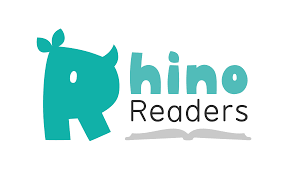English including phonics, reading and spelling
At Shirehampton Primary, English is a big part of the school day - whether it's through discrete lessons or the fact that reading and writing is embedded into everything we do.
The English curriculum handbook detailing the progression of how this subject is taught across our school, can be found here.
You can also find resources to help out at home with phonics and reading.
Phonics
At Shirehampton Primary all children are taught how to read and write through phonics lessons which begin in the Nursery. We are currently teaching using the Twinkl Phonics scheme. To learn more about this scheme, please click here to read the Twinkl phonics handbook which goes into detail of how the scheme progresses and how lessons are structured. Twinkl Phonics is divided into 6 levels, to view what exactly is taught in which level please take a look at the Whole School Overview.
Top Tips- Reading with Your child at Home
Children are expected to read their reading book three times on three different days. Below are three videos demonstrating how each of these reads builds decoding, comprehension and fluency skills so children are able to read with confidence and expression. We also send home a 'Sharing book' each week, these are for you and your child to be able to take some time and enjoy reading together.
First read:
/i/video/Copy_of_Decodable-book-day-1.mp4
Second read:
/i/video/Decodable-book-day-2.mp4
Third read:
/i/video/Decodable-book-day-3.mp4
We are able to upload games, worksheets and activities to Twinkl Go for you to access and support your child at home. To ensure these best suit the level your child is working at please ask the class teacher for more guidance where they will be able to create a unique PIN for you to then enter on the website. Click on the image below which will take you to the Twinkl Go website, there you will be able to type in your PIN to access any phonics support or online Rhino Readers texts.
Reception code for Level 2 online games and books: LW6541 (Please press the image above to take you to the Twinkl go website and then enter this code)
Reading
Once children have mastered their phonics, the emphasis turns to understanding what they have read (this is called comprehension). The reading curriculum is split into different content domains, which breaks down comprehension skills into different areas. Below is a table outlining the different domains for each key stage.
| 1a/2a | 1b/2b | 1c/2c | 1d/2d | 1e/2e | 2f | 2g | 2h | |
| KEY STAGE 1 | 1a draw on knowledge of vocabulary to understand texts | 1b identify / explain key aspects of fiction and non-fiction texts, such as characters, events, titles and information | 1c identify and explain the sequence of events in texts | 1d make inferences from the text | 1e predict what might happen on the basis of what has been read so far | |||
| KEY STAGE 2 | 2a give / explain the meaning of words in context | 2b retrieve and record information / identify key details from fiction and non-fiction | 2c summarise main ideas from more than one paragraph | 2d make inferences from the text / explain and justify inferences with evidence from the text | 2e predict what might happen from details stated and implied | 2f identify / explain how information / narrative content is related and contributes to meaning as a whole | 2g identify / explain how meaning is enhanced through choice of words and phrases | 2h make comparisons within the text |
If you click on the links below, you can find a resource that shows you questions tailored to the different content domains that you can ask your child as you listen to them read. This will help improve their comprehension skills.
Questions to ask your KS1 child when reading
Questions to ask your KS2 child when reading
Spelling
For more information about how we teach spellings at Shirehampton, please click here.
SPELLINGS
Each year group hand out weekly spellings which you can access through their class pages but below is an outline for each year.
Year 1Year 2Year 3Year 4Year 5Year 6

 Shirehampton
Shirehampton 